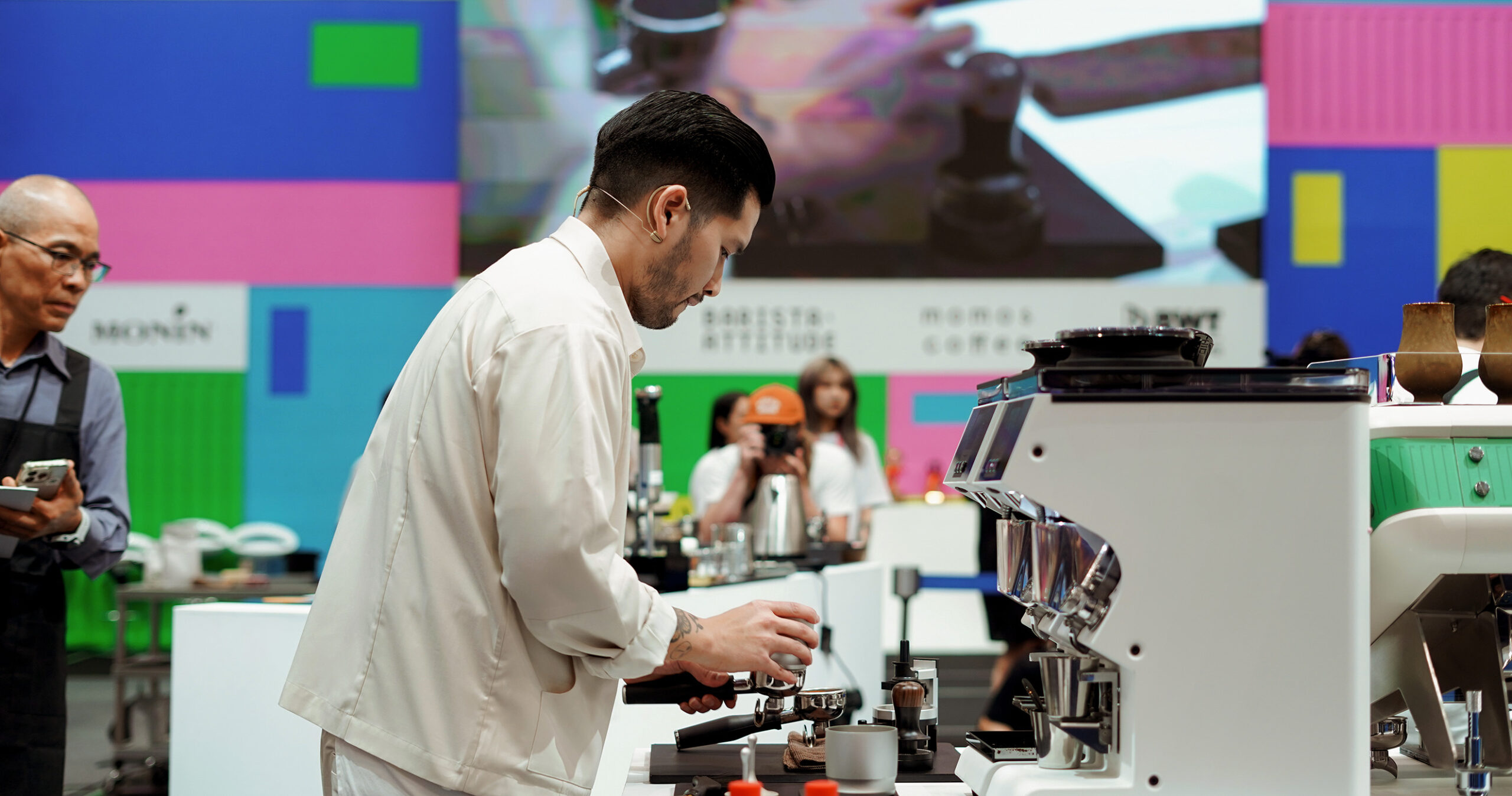In the high-stakes world of the 2003 World Barista Championships, Paul Bassett’s journey to victory took an unexpected twist. Representing Australia, Paul narrowly missed the finals due to a technicality spotted by Toby Smith—the impression of the screw that holds in the shower screen was visible on the spent coffee puck, indicating an overdose of coffee. But what does ‘too much’ even mean in the barista world?
Toby Smith, the founder of Toby’s Estate and then head of ASCA, noticed the deduction on Paul’s scoresheet and decided to challenge it. They convinced the judges to participate in a blind taste test to see if the impression on the puck really affected the taste. The result? A resounding no. The judges rescinded the deduction, allowing Paul to squeeze into the finals.
Once there, Paul brewed up four potent triple ristrettos, securing his title as the World Barista Champion. Watching the video of his performance, it’s clear that his dose was so high, his tamper barely fit inside the filter basket. Keep in mind, basket sizes were much smaller back then compared to today’s 24-gram baskets. The head judge’s questions during his routine must have been a bit distracting too! Interestingly, Sonja Bjork Grant, the Icelandic coffee roaster who started the WBC, was one of the sensory judges.
It’s worth noting that seeing the screw or shower screen mark on a spent puck today doesn’t necessarily mean the screw touched the coffee during extraction. When a shot finishes, the pressure release can cause the puck to expand upwards. Back in 2003, espresso roasts were quite dark and acidic levels were low. To add acidity, baristas often up-dosed, a trend that Paul Bassett popularized with his triple ristretto.
Fast forward to 2024, and the new World Barista Champion, Mikael Jasin from So So Good in Indonesia, has brought a different approach. For his winning espresso, Mikael used a 1:2.5 ratio with a 21-gram dose, extracting 52 grams. Each judge received 2.2 grams of dissolved coffee extract, a stark contrast to Paul’s method, where each judge got about 1.15 grams.
Mikael’s technique highlights the evolution in espresso making. He aimed for a high TDS reading around 8.5%, emphasizing the importance of understanding ‘extracted mass’ in coffee. This approach can potentially save costs while delivering consistent quality—a crucial factor for café recipe design.
In 2022 and 2023, the World Barista Championships saw innovations like cryodesiccated milk and cow/coconut blends. Mikael, however, chose a more classic route for his signature and milk drinks, using a ‘boomer shot’ ratio of 1:1.5. His milk blend consisted of 60% dairy, 20% cashew milk, and 20% oat milk, evaporated to an 80% concentration. The result was a cortado-like drink with flavors of peach liqueur, cantaloupe, and marzipan, with a chocolate truffle aftertaste.
It’s fascinating to see how techniques and preferences have evolved over the years, from Paul’s enamel-stripping ristrettos to Mikael’s balanced, flavor-rich shots. The advances in grinder design, roast development, and brew-water temperature have all contributed to these changes. And who knows, maybe Mikael’s success will bring a resurgence of the ‘rizz!’
Paul Bassett’s triple ristretto and Mikael Jasin’s modern techniques showcase the evolving world of espresso. While trends and technologies change, the barista community continues to push the boundaries of what great coffee can be. Whether it’s a robust ristretto or a balanced extraction, the art of coffee making keeps flourishing, one shot at a time.
